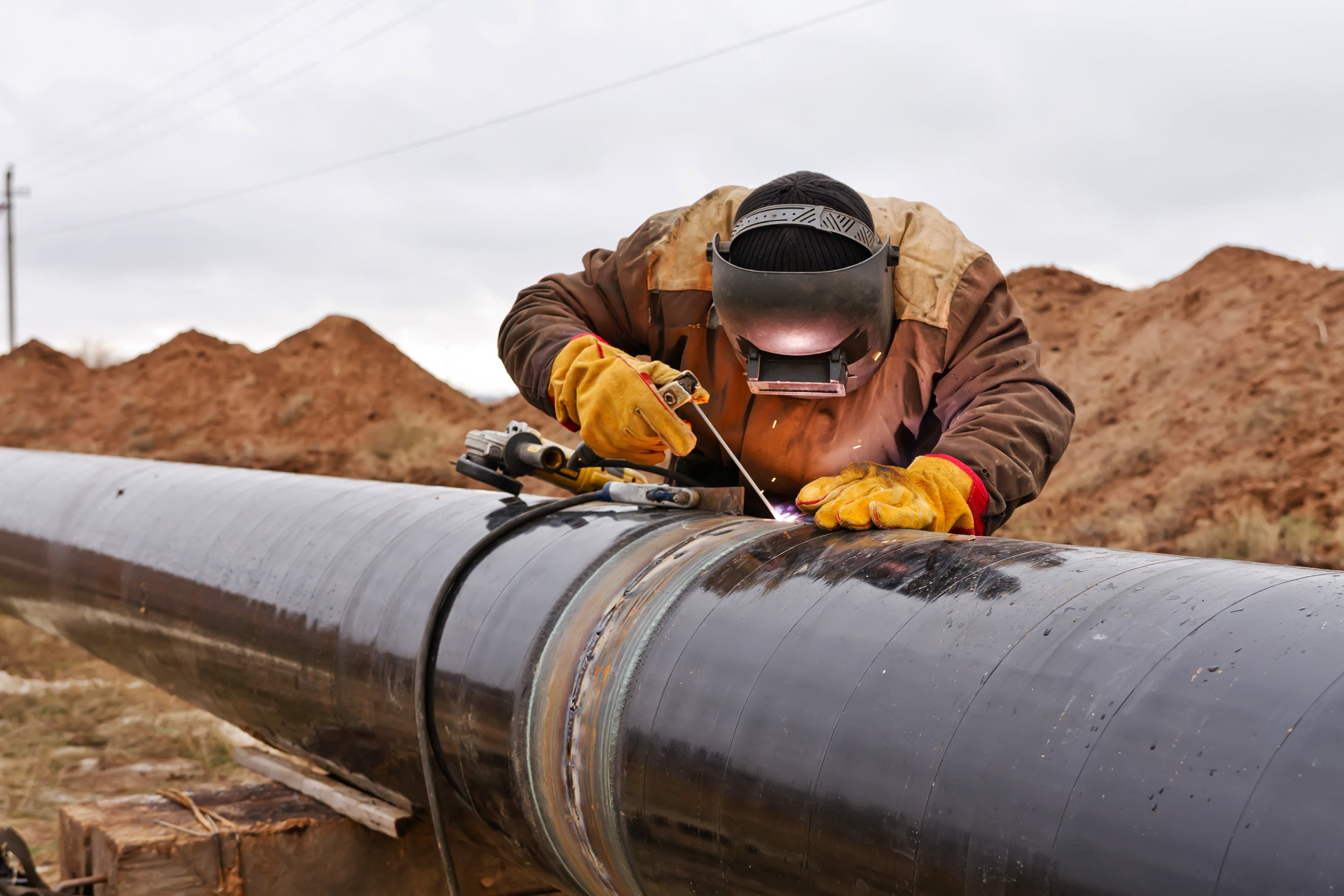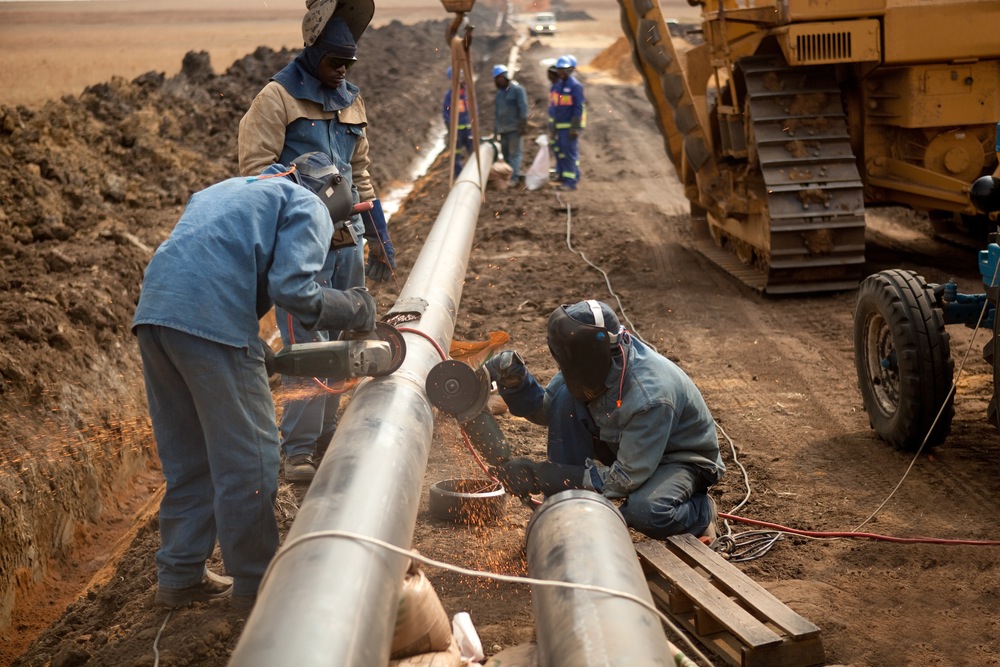Why Creek Pipe Midland Stands Out for Texas Installations
Wiki Article
The Importance of Pipeline Construction: Discovering the Services Offered in the Market
Pipeline construction is a crucial component of contemporary framework. It assists in the transportation of crucial sources like oil, gas, and water. The sector includes numerous solutions, including preparation, site preparation, and installment. Each stage needs precision and adherence to safety and security standards. As areas rely on these systems for their livelihoods, recognizing the complexities of pipeline construction reveals its significance and prospective difficulties. What aspects affect the success of these projects?Summary of Pipeline Construction Providers
Pipeline construction services encompass a range of customized activities designed to promote the setup of pipes for moving different compounds, consisting of oil, gas, and water. These services generally consist of website preparation, excavation, installation of pipeline segments, and backfilling. Competent labor and innovative equipment are basic for guaranteeing each stage is performed with accuracy and safety.Safety procedures are vital, as these tasks typically include functioning with dangerous materials and in tough environments. Quality assurance measures establish that the pipes meet market criteria and policies. In addition, the solutions may entail trenchless innovation, which minimizes surface area disruption.Environmental factors to consider play a substantial duty in pipeline construction, calling for analyses and reductions to shield bordering ecological communities. Generally, pipeline construction solutions are crucial for developing the facilities necessary for power and water distribution, supporting both economic growth and social demands.Planning and Layout in Pipeline Projects
Efficient preparation and design are crucial components of effective pipeline projects, making certain that all aspects are thoroughly dealt with before construction starts. This phase includes comprehensive usefulness research studies that analyze the technological, financial, and ecological aspects influencing the job. Designers and developers team up to develop comprehensive plans that outline the pipeline path, products, and construction approaches, aligning with regulative needs and sector standards.Advanced software application and modeling strategies are commonly used to mimic numerous situations, optimizing the design for effectiveness and safety. Ecological effect analyses are conducted to minimize potential harm to ecosystems and communities, reflecting a dedication to sustainable methods. Furthermore, stakeholder interaction is crucial, promoting interaction and dealing with concerns from impacted parties. Inevitably, effective planning and style set the structure for a pipe task, reducing risks and ensuring a structured construction process, ultimately contributing to the overall success of the procedure.Website Preparation and Excavation
Thorough website prep work and excavation are vital steps in the pipe construction process. This stage includes a comprehensive evaluation of the land where the pipeline will be mounted. Task groups conduct studies to recognize soil kinds, topography, and existing utility lines to assure a risk-free and efficient excavation. Proper site prep work reduces ecological influence and helps with smoother construction operations.Excavation adheres to, where hefty machinery is employed to get rid of dirt and rock, producing a trench that meets the specified depth and size for the pipe. This procedure must stick to safety policies and environmental guidelines to avoid damages to surrounding ecosystems.Additionally, disintegration control actions are implemented to stabilize the site throughout and after excavation. Effective website preparation and excavation add considerably to the general success of pipeline jobs, laying a strong foundation for the succeeding phases of construction.Pipeline Installation Methods
Pipeline installation techniques are necessary for the effective implementation of framework jobs. 2 prominent methods consist of trenchless technology, which minimizes surface disturbance, and the open-cut excavation procedure, understood for its uncomplicated method. Each technique supplies unique benefits and considerations relying on job requirements and ecological variables.Trenchless Innovation Approaches
While standard approaches of pipeline installment commonly entail substantial excavation, trenchless modern technology methods use a more efficient and eco-friendly option. These ingenious methods, such as horizontal directional drilling and pipeline bursting, minimize surface disturbance by enabling for the installation of pipes without substantial digging. This not just minimizes the ecological influence but also considerably reduces labor and reconstruction prices. Trenchless techniques promote the setup of pipes in urban areas where traditional excavation would be not practical or destructive to existing infrastructure. Additionally, these techniques can accommodate different soil types and conditions, making them functional remedies for pipeline construction. Ultimately, trenchless innovation stands for a considerable advancement in the pipeline market, advertising sustainability and functional effectiveness.
Open-Cut Excavation Process
Open-cut excavation stays an essential strategy in pipe installation, defined by the direct excavation of a trench to lay pipelines. This technique entails eliminating dirt and other products to create a trench of enough deepness and size, permitting the positioning of pipelines at the needed grade. Open-cut excavation is typically liked for its cost-effectiveness and simplicity, particularly in locations with stable soil problems. Nonetheless, it can interrupt surface area activities and calls for careful planning to manage website traffic and environmental effects. Safety actions have to be executed to protect workers and close-by infrastructure during the excavation procedure. Overall, while open-cut excavation may not appropriate for all terrains, it remains an extensively utilized method in pipe construction.Evaluating and Quality Control
Testing and quality control are essential components in pipeline construction, ensuring that installments meet recognized safety and security standards and efficiency demands. Different examination strategies and methods are utilized to assess worldly top quality and adherence to governing compliance. This systematic method helps determine prospective concerns prior to they intensify, guarding the stability of the pipeline system.
Examination Techniques and Methods
Assessment strategies and approaches are necessary parts in guaranteeing the integrity and safety of pipeline construction. Various strategies, including aesthetic examinations, ultrasonic testing, and radiographic exams, are used to identify flaws and confirm quality. Aesthetic evaluations allow for the identification of surface area anomalies, while ultrasonic testing makes use of sound waves to assess wall density and locate flaws internally. Radiographic evaluations entail X-rays or gamma rays to generate pictures of the pipe's framework, exposing concealed issues. Furthermore, stress screening is conducted to evaluate the pipeline's honesty under operational problems. These techniques collectively add to a comprehensive understanding of the pipe's condition, allowing timely maintenance decisions and guaranteeing conformity with market standards. Effective assessment is vital for preventing failures and advertising long-lasting functional safety.Safety And Security Criteria Compliance
Making certain compliance with safety requirements is critical in pipeline construction, as it straight influences the task's total high quality and reliability. Sticking to well established guidelines and guidelines warranties that construction methods reduce risks connected with pipeline setup and operation. Creek Pipe trenching services. Rigorous screening procedures, consisting of non-destructive screening and pressure assessments, are vital in confirming that pipes can endure the functional stress and anxieties they will certainly come across. Quality control actions are additionally important, as they develop a framework for regular tracking and examination throughout the construction process. By focusing on safety standards conformity, business not only secure workers and the environment but also improve the integrity of the pipe, eventually leading to lasting operational success and public trust in the infrastructureProduct High Quality Examination
Product high quality assessment plays a considerable function in the overall honesty of pipeline construction. This process entails strenuous screening and quality control measures to guarantee that materials meet sector criteria and specs. Various tests, consisting of tensile stamina, rust resistance, and weld integrity evaluations, are performed to recognize any kind of prospective weaknesses. A detailed assessment not just ensures the performance of the pipeline yet likewise enhances security and toughness over its life expectancy. Furthermore, implementing quality control protocols aids reduce risks connected with product failings, which can lead to pricey repair work and ecological risks. By prioritizing worldly quality evaluation, firms can guarantee compliance with governing requirements while promoting self-confidence among stakeholders in the reliability of their pipeline systems.Repair And Maintenance Providers
Creek Pipe HDPE installation Upkeep and repair solutions play an essential duty in the long life and performance of pipe systems. These solutions encompass routine assessments, fixing, and corrective actions to resolve damage, leakages, and various other problems that may arise gradually. Proficient service technicians make use of innovative innovations such as ultrasonic testing and clever pigging to keep track of pipe stability, guaranteeing that any type of possible troubles are determined early.Additionally, upkeep programs commonly consist of scheduled preventative steps designed to enhance system dependability and reduce the chance of unforeseen failings. Repair solutions might include the replacement of broken sections, securing leaks, or using trenchless technology for marginal disturbance.Environmental Compliance and Safety Steps
Pipeline systems not just require continuous upkeep and repair work to work efficiently however additionally should comply with rigorous environmental compliance and precaution. These guidelines are essential for decreasing ecological impact and ensuring public safety. Firms in the pipe construction market execute extensive environmental analyses before project initiation, recognizing potential risks to wild animals and ecosystems.Furthermore, adherence to safety methods secures employees and surrounding neighborhoods. This includes routine training on emergency situation reaction and spill prevention techniques.To maintain conformity, industries make use of checking modern technologies to discover leakages and other anomalies in real-time. Ecological management strategies are commonly developed to outline steps for attending to unforeseen concerns during construction.Ultimately, stringent adherence to ecological compliance and safety and security actions not only fulfills lawful commitments but also cultivates sustainable practices within the market, promoting an equilibrium in between infrastructure development and environmental stewardship.Often Asked Concerns
What Job Opportunities Are Readily Available in Pipeline Construction?
Career opportunities in pipe construction encompass functions such as project managers, engineers, welders, and safety and security inspectors. These positions call for diverse skills, offering paths for growth in an important sector of framework advancement and power distribution.

How Do Pipeline Projects Influence Local Communities?
Pipeline projects substantially impact neighborhood neighborhoods by influencing economic growth, giving task chances, and improving framework. However, they may likewise raise concerns about environmental effects, land use, and possible disruptions to area cohesion and natural ecosystems.
What Technology Is Utilized in Modern Pipeline Construction?
Modern pipe construction makes use of innovative innovations such as GIS for mapping, drones for aerial studies, and automated welding systems to enhance effectiveness, safety, and accuracy, ultimately assisting in the reliable transport of resources across numerous terrains. Creek Pipe HDPE installation.Exactly How Are Pipeline Construction Prices Estimated?
Pipeline construction costs are approximated via detailed evaluations of products, labor, tools, and regulatory demands. Aspects like surface, job size, and environmental considerations additionally considerably affect the general spending plan and economic preparation for construction.What Are the Largest Challenges in Pipeline Construction Projects?
The most significant difficulties in pipe construction tasks consist of regulative conformity, environmental worries, logistical issues, securing funding, and handling labor shortages. Each aspect can greatly impact timelines and spending plans, making complex the total execution of the job.Report this wiki page